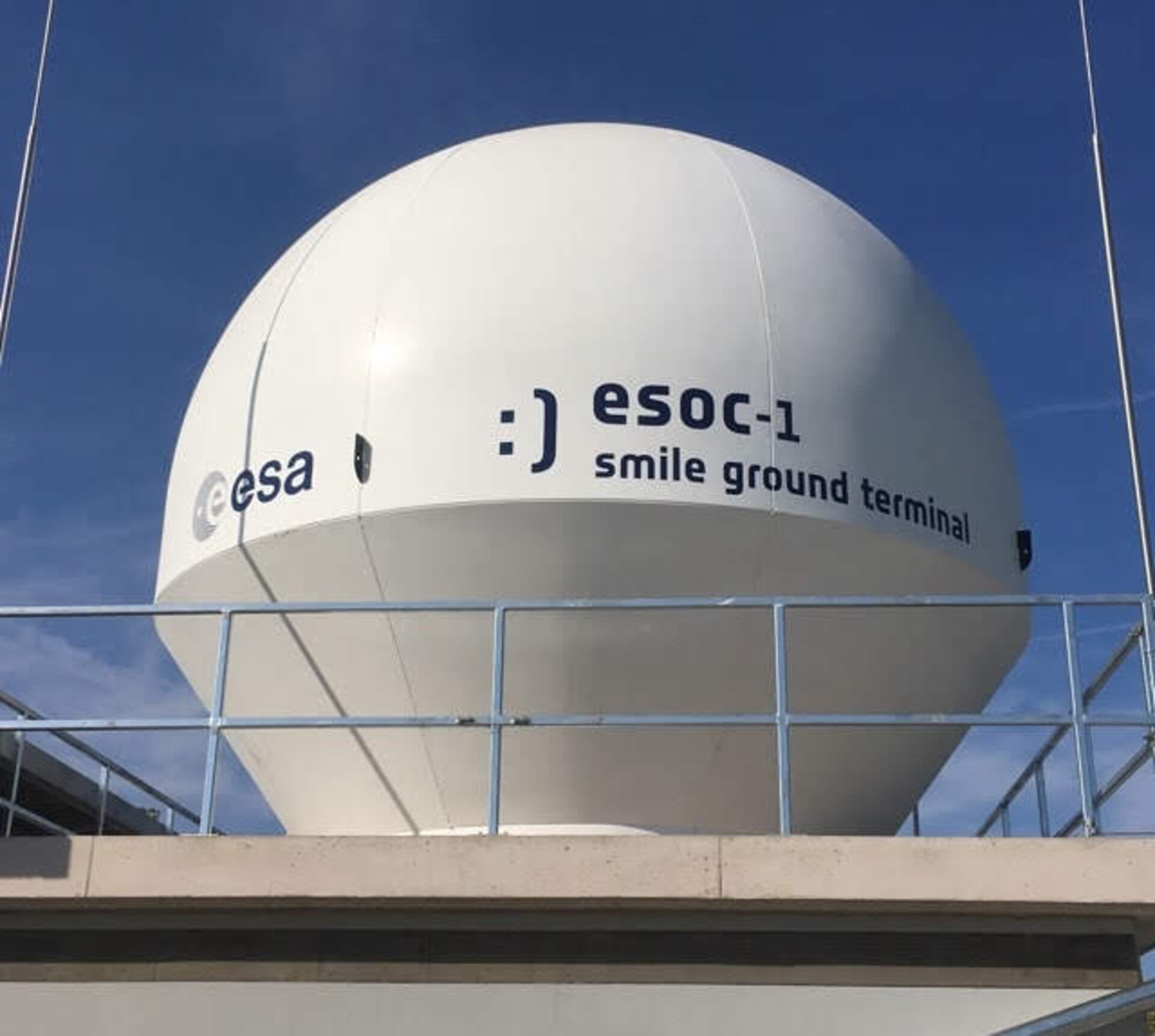Open-to-use SMILE antenna wins hertz and minds
On 10 November 2024, the final of three Australian CubeSats reentered the atmosphere. Like many other small satellite missions, they benefitted from the SMILE lab for tracking and monitoring.
Between 9 and 10 November 2024, lucky bystanders might have been able to witness three bright lines passing through the sky. At ESA's operation centre in Darmstadt, Germany, these three lines correspond to three Australian satellites reentering our atmosphere one after the other, and about to join the other 62 missions that benefitted from the SMILE network of antennas.

Over the last two and a half months, Binar-2, 3 and 4, three CubeSats developed by the Binar team from Curtin University, based at Perth, in Western Australia, have been circling the Earth at an altitude of 400 km above sea-level. Deployed from the International Space Station on 29 August, the satellites used a network of antennas scattered around the globe to track them and downlink their data. The only antenna in the Northern hemisphere used for uplink was ESA-owned and is called SMILE.
Located at ESOC, SMILE - or Special Mission Infrastructure Lab Environment - is an open-to-use and flexible small satellite mission control and operation methods validation environment. Since 2019, it is accessible by any ESA member state business, university or organisation and other entities via dedicated support agreements. The facility comprises one laboratory and four antennas available in many different configurations - S-Band, X-Band, and UHF; up- and downlink; commercial and amateur radio.

"We were happy to offer Smile’s 70 cm amateur radio UHF frequency band antenna – ESOC-2 – to the team behind the three CubeSats for the duration of their short low-Earth orbit mission. Already being used for the Binar-1 mission, we had to adapt and re-validate the configuration of our antenna to match their requirements. Several dozens of operational passes were taken, giving the SMILE team valuable experience in both technical and operational terms," says Melanie Flentge, Ground Operations Engineer at ESA.
“The mission challenged us to track three satellites simultaneously before they drifted apart. Our support gave us the opportunity to implement and validate complex software-defined radio functions that, could be used in future cub-sat missions, from academia or startups,” says Diogo Marinho, Station Engineer.

"Working with the ESA SMILE team is exciting for the Binar Space Program. We are overly grateful for their efforts in listening and communicating with Binar-2, 3, and 4. Their ground station provided valuable information on the state of all three satellites which assisted us in our operations. Other universities or companies interested in using the SMILE facilities should be encouraged to do so if possible. We are looking forward to continuing our work with the team in the near future,” says Fergus Downey, Project Manager at the Binar Space Program, Curtin University.
This service is another recent example of the ongoing cooperation between the European Space Agency and Australia in the domain of space mission operations. Since 2018, ESOC has been particularly involved with the Curtin University as well as the University of Western Australia to exchange knowledge on spacecraft technology and operations, mission operations architecture, remote operations and automation as well as radiofrequency communications.
More generally, ESA and Australia have held a long-standing, close and productive relationship in areas such as Earth observation, space science and technology, and have been sharing data and expertise for many years. Located 140 kilometres north of Perth, the New Norcia station, operated by ESA and housing a 35-metre, deep space antenna, is testimony to this close relationship. Another deep space antenna is currently under construction on the site and will be operational from the end of 2025.


